Water is the most critical resource for humans. You can survive 30 days without food, but you won’t make it 3 days without water.
While water is exceptionally abundant on our planet, only a small portion is safe to drink due to the majority of the water containing substances or contaminants that can make us sick. This leaves us in need of ways to make this water drinkable.
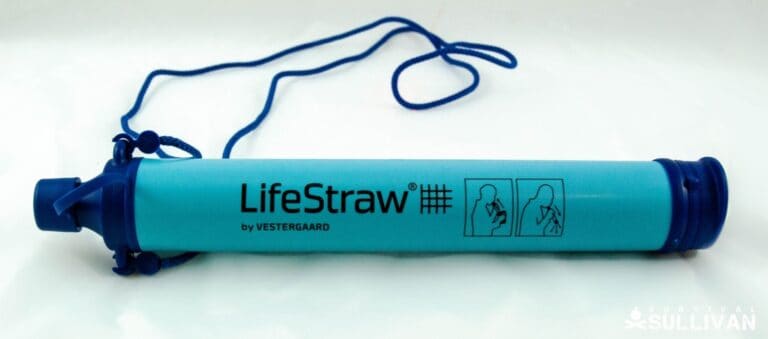
This is where water filters come in. Water filters remove sediment and biological contaminants from our water and make it safe to drink.
They can be large enough for domestic use, or small enough for personal use. They can also be for either everyday use or emergency use. Regardless of their size and purpose, water filters are crucial to our survival.
Table of Contents
Filters as Part of Your Preps
When it comes to preparedness, water filters are essential to include in our preps. Regardless of whether you depend on a well or a municipality for your water, or how many redundancies you have, the possibility that you may need to filter your water due to possible contamination could arise.
Water filters for emergency use can be costly and complicated, while others are more affordable and very simple to use. The filter you choose is mostly dependent on your personal preferences and expectations from your filter.
Disclosure: This post has links to 3rd party websites, so I may get a commission if you buy through those links. Survival Sullivan is a participant in the Amazon Services LLC Associates Program. As an Amazon Associate, I earn from qualifying purchases. See my full disclosure for more.
In this article, I am going to review a popular water filter that is being sold on the market and has gained a lot of attention due to its small size, ease of use, and low cost. This filter is called a LifeStraw and is manufactured by Vestergaard.
The LifeStraw
The Lifestraw personal water filter is designed to be used similarly to a drinking straw, by placing one end in dirty water and sucking on the other end to pull the water through the filter and into your mouth.
Vestergaard claims the filter removes 99.999999% of bacteria and 99.999% of protozoa, including Giardia and Cryptosporidium. The filter is designed to filter 1000 Gallons (4000 liters) of water before being discarded.
According to the packaging the filter pore size is 0.2 microns, it weighs 2oz (57 grams) and is based on hollow fiber membrane technology. The filter is also BPA free and contains no chemicals or moving parts.
They also claim that the filter does not have an expiration date, only the 4000-liter limit. The packaging also states that the LifeStraw meets the US Environmental Protection Agency’s (US EPA) drinking water standards.
Vestergaard markets the LifeStraw as being a cheap and lightweight alternative to other, more expensive backpacking filters designed for outdoor recreation activities, and an excellent option for emergency preparedness.
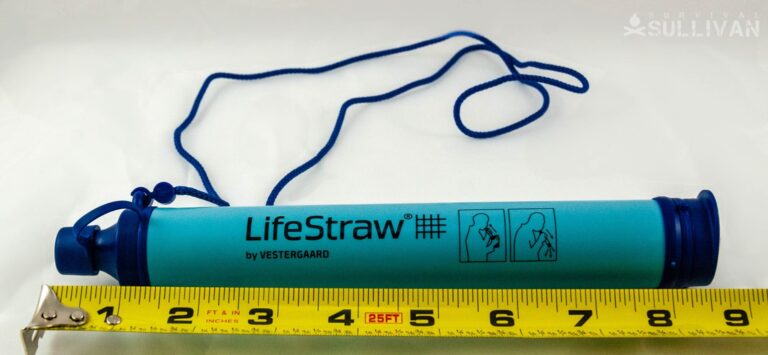
My Review
To review this product I decided to purchase one to test it out for myself, as well as read countless articles, comparisons, complaints, forum posts, and reviews from users who ranged from extremely happy and satisfied to dis-satisfied and considered it useless junk.
Keep in mind that this is not like a gravity filter where you fill a reservoir and it goes through the filter. It will filter a liter of water pretty easily but any larger quantities will take quite a long time.
When reading through the material, some notable complaints seemed to continue to re-appear frequently across a large number of users. I will focus on those potential problems as well as my own experiences and opinions.
My Personal Experience
I had purchased this filter to play with it and test it out. We messed around with it and drank some rainwater from the barrel, and it worked pretty well. I dried out the LifeStraw and tossed it into my pack as a backup since it is so small and lightweight.
About a month later my family and some friends were hiking a local mountain that is a brute. We knew we would be drinking hard, especially in the heat, and planned accordingly. Through some sort of miscommunication, we ended up on the trail with only our bladders, and all of our water bottles still in the cooler in the car.
I won’t say that we were in a life or death situation because it indeed was not one, but nonetheless, it was an opportunity to test the filter in real-world conditions.
We hiked until we found a little pond at the base of some rocks. It was murky, muddy and nasty looking. We took my son’s sippy cup water bottle and scooped up water from the pond, popped the filter in, sucked it through the straw, and then backfeed it into our bladders.
The short of it is that the filter worked, and did what it said it would do. It filtered dirty turbid water into drinking water. There was one caveat that I will discuss in more detail below, but other than that it performed as expected.
Price
My filter cost under $20. This is a fantastic price point if you compare it to other personal water filters currently on the market. However, the LifeStraw is disposable, and you cannot change the filters.
Therefore, you have a 1000 gallon (4000 liters) shelf life, compared to most filters where you can just buy a new filter cartridge and you are good to go. Still, even though it does have to be replaced, I feel the $15 price tag makes it a good value even with the 1000 gallon limit.
Ease of Use
The filter is as simple as using a regular drinking straw. The biggest struggle you will have is opening the caps on each end. When researching it, you will see a lot of pictures of people just kneeling down and drinking with it from a lake or other body of water.
I was not able to do that under any circumstances, so what I did was fill my wide-mouth water bottle up with “dirty” water, and then put the LifeStraw in the bottle and drank it. Simple and easy.
The manufacturer recommends that you blow water back through it every once in a while, and when you are finished with it, to help keep large debris out of the filter and keep it flowing, which again was simple and easy.
Another advantage for the LifeStraw in this category is that there is no pumping or twisting to use the filter. All you do is suck on it like a regular drinking straw. I expected it to be quite challenging to draw the water through the filter, but there was not that much resistance. I would compare it to drinking a milkshake.
Taste
The main point of a personal water filter is not to make great tasting water, but clean and safe water. However, some improvement in taste will always help you drink more and stay hydrated. This filter failed miserably in this category.
When we put it to the test on the trail, the water was clean and had a good look to it, but still tasted like nasty pond water. I am sure you could limit this by getting fresh running water from a rocky creek, but that is not always available. When comparing the taste from this filter to water filtered through my MSR Mini Works, it was not even a close race. The MSR water tasted much better.
Using this filter to change the taste of tap water won’t disguise the taste as you will probably need more sophisticated filtration devices. It is meant to just give you potable water at the sacrifice of taste.
Weight and Size
This is one of the most significant advantages for the LifeStraw. At only 8.5″ long and 1″ across this filter is small. It also has no accessories or hoses to deal with. It weighs only 2 ounces. You won’t even notice that it is in your bag.
When it is wet inside it does gain a little weight from the additional water, but it is still negligible. A small and extremely lightweight filter means that not only can you have one in each bag or on each person, but also that you can carry two for redundancy.
Reliability and Effectiveness
The Lifestraw utilizes a hollow membrane filter which effectively strains out waterborne bacteria like Salmonella, parasites and protozoa, including Cryptosporidium, but it does not remove viruses. It also does not remove any chemicals that are in the water, which is almost always a possibility in today’s world.
There is also no way to troubleshoot this water filter, other than blowing out the water you just sucked in to backflush the filter and remove debris.
The reliability of the filter was one of the primary complaints people had with the LifeStraw. You can’t change the filter, you can’t open it to clean it and wash it out, so if it does mess up, you are just stuck.
When reading reviews, several people complained about the filter becoming clogged after one, or just a few uses, and not being able to work after.
One Amazon review stated “Used once in relatively clean clear stream water. Plugged up and unusable since. Unable to “back-flush” even with compressed air. This is a defective filter. I have used a Sawyer filter for several years without problem. Suggest you avoid Lifestraw, instead buy Sawyer.”
Another stated “Used it two times within a month first summer. Worked well. A year later I took it for the trip and it turned out totally out of order. Didn’t work for some reason at all, though I tried multiple times cleaning it and running water through it. Couldn’t get anything out of it.”
Most of the failures were after the filter had been used, and then put away for storage. Many people reported that once they went to use the filter a second time, they could not get water through the mouthpiece.
This did not seem to be fixed by shaking, soaking, or backflushing. This unreliability, and not being able to troubleshoot the filter once it fails, severely limits the reliability of this filter.
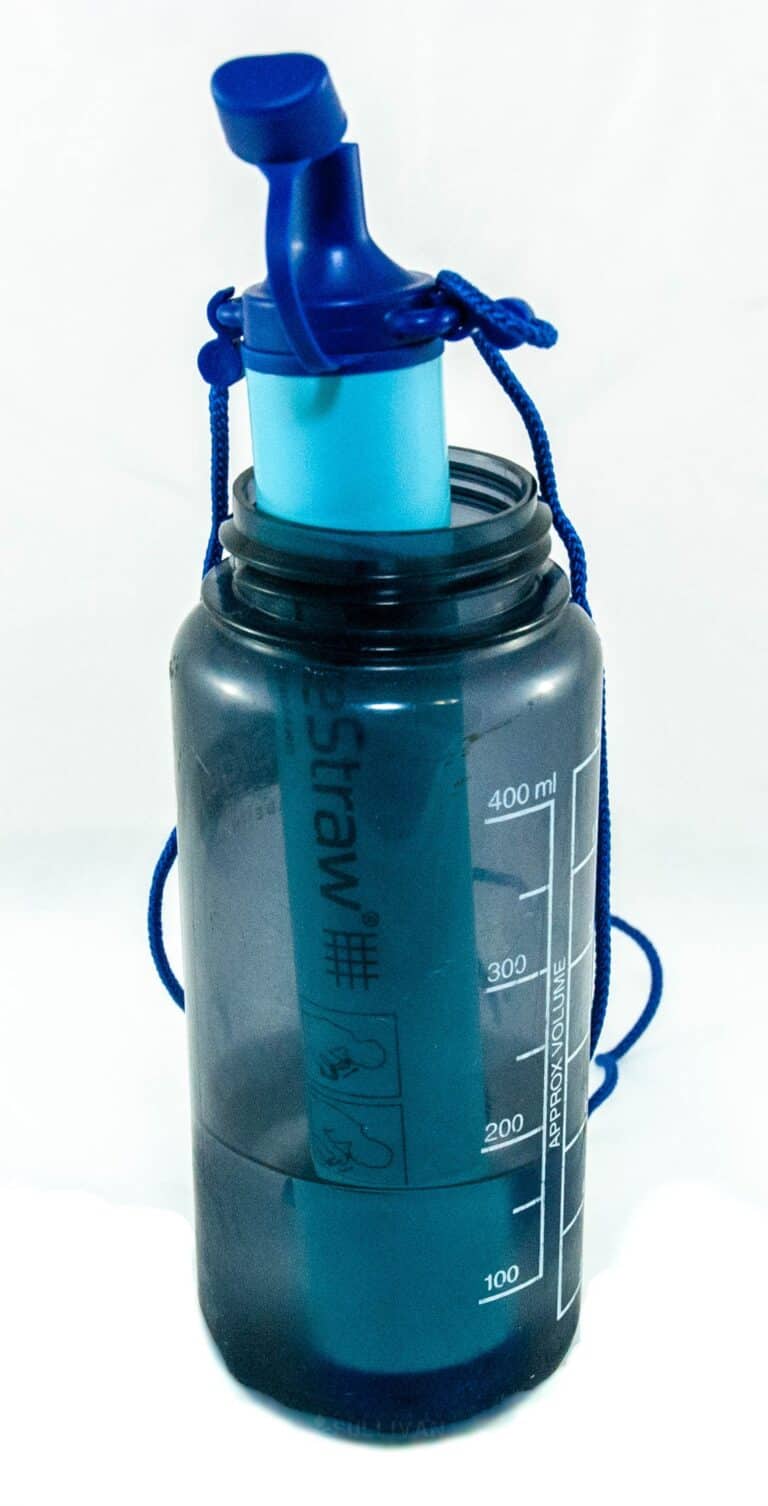
Cons
One of the biggest cons to the LifeStraw is that it only works at the water source. Once you walk away, there is no way to filter on the go. If you have a water bottle on hand, you can do what I did at the pond.
Grab up some water and then use the filter, but even then you only have the bottle and would have to put the filter in and take it out every time you wanted a drink.
The second is lying flat on your belly every time you want to take a drink. What about if it was a survival situation or something off the trail? If you wanted to take a drink from a sink, you would have to stop the sink up and fill it up with several inches of water just to take a drink.
LifeStraw must have thought of these issues as well because they made a version that comes with its own bottle. It is called the LifeStraw Go Water Bottle and has an integrated LifeStraw built into it.
You take off the lid, fill with water, replace the lid and drink through the LifeStraw. This makes the LifeStraw Go a better choice of water filtration for most people, but it adds additional weight and volume to what is supposed to be a lightweight and small filter.
The LifeStraw Go also does not use a standard LifeStraw as a replacement filter, but rather a special insert that is just a little bit different. Seems like it would be much more convenient to be able to switch it out with a regular LifeStraw, but as of now, that is not possible.
Oftentimes people are in groups for outdoor recreation or even survival situations. The LifeStraw does not have the capability to be used passively, meaning that to share the filter each person will have to put their mouth on the mouthpiece and suck up water.
This creates a considerable concern about passing germs and illness around a group and possibly making someone sick. It also eliminates the ability to help someone else on the trail by giving them some water.
Other Options
There are several other options available instead of using a LifeStraw. If you are wanting a water filter, For example, you have:
- Sawyer MINI Filter
- Survivor Filter
- Sawyer 34oz Personal Water Bottle Filter
Of course, you also have options that do not involve a water filter at all. You should keep in mind though that if you choose to bypass the filter, and just use water treatment, that if you start with muddy water, you will still be be drinking muddy water. It will just be safe to drink muddy water.
- Aquamira – Chlorine Dioxide Water Treatment Two Part Liquid
- Potable Aqua Water Purification Treatment Tablets
- Potable Aqua PURE Water Purifier, Portable Electrolytic Water Treatment
- PURINIZE Water Purifier
- SteriPEN Aqua UV Water Purifier
- Polar Pure Iodine Water Filter Purifier
- Jetboil Rapid Water Boiling System
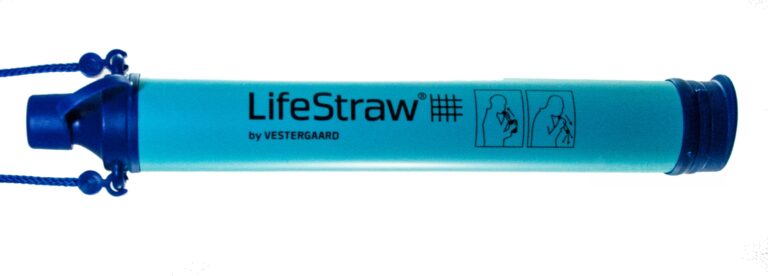
Verdict
The LifeStraw is a very unique, and useful device for some circumstances. It would be great for international travel or as an emergency backup. Unfortunately, I do not feel that with the reliability issues that many users have faced that this filter would suffice as your primary water filter.
It would certainly be a good back-up in case your primary goes down, but that would be its limit. Also if the LifeStraw has to be used, I would most likely consider it done and replace it with a new one.
From a preppers standpoint, the LifeStaw is so small and light, it makes sense to stock them and to distribute them liberally.
You could have one or two in each bag, a couple in each vehicle, and several stored as backups in case someone has to use one. The low cost of the units makes this a possibility, where the cost of other filters makes having multiple stores difficult.
In the right situation, the LifeStraw would be amazing to have on hand, but I would not feel comfortable personally depending on this filter to be my only option for safe drinking water.
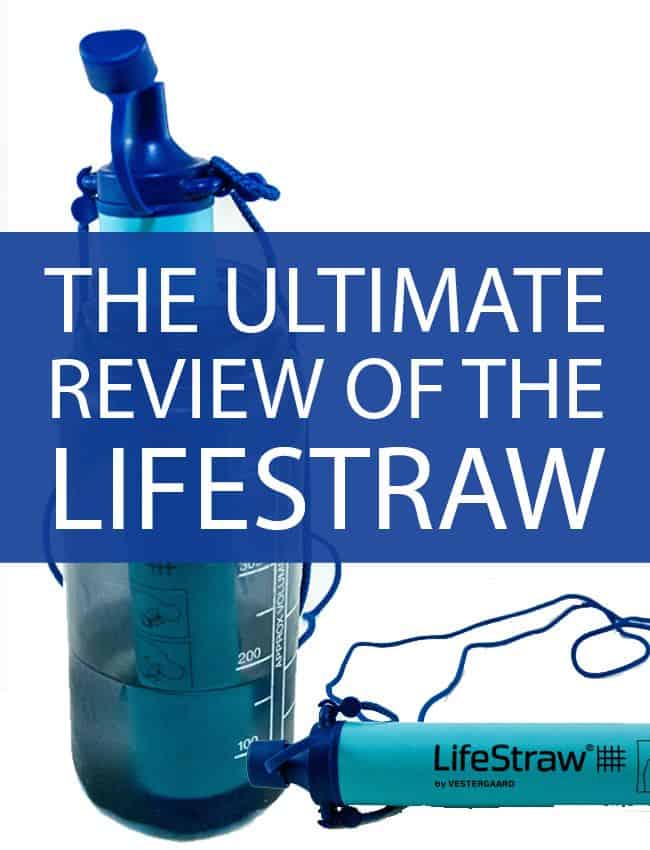

Born and raised in Kentucky, Steve grew up deep in the mountains on a family farm. After college, Steve spent over 15 years working in public service and has experience in Fire, EMS, and Law Enforcement. He has also worked with training and deploying search & rescue and service dogs for utilization in a variety of services.
Steve is also a Scout Leader with the Boy Scouts of America, and works to teach preparedness to the next generation. Steve has worked with and taught firearms and self-defense in multiple venues, from tactical applications to long range shooting, and also has extensive training in first aid and wilderness first aid.
An active prepper, Steve has devoted hundreds of hours to mastering and teaching skills and techniques for use in survival, homesteading, and general preparedness.

Very nice review on survival water filters and mre’s